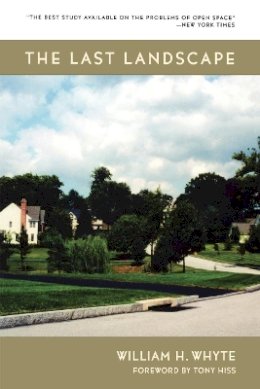12%OFF

Stock image for illustration purposes only - book cover, edition or condition may vary.
The Last Landscape
William H. Whyte
€ 41.99
€ 37.13
FREE Delivery in Ireland
Description for The Last Landscape
Paperback. "For years we wasted land with impunity," William H. Whyte writes in this classic work at last returned to print, "now we no longer can." Num Pages: 392 pages, 21 illus. BIC Classification: RNC; RPC. Category: (U) Tertiary Education (US: College). Dimension: 227 x 153 x 28. Weight in Grams: 580.
The remaining corner of an old farm, unclaimed by developers. The brook squeezed between housing plans. Abandoned railroad lines. The stand of woods along an expanded highway. These are the outposts of what was once a larger pattern of forests and farms, the "last landscape." According to William H. Whyte, the place to work out the problems of our metropolitan areas is within those areas, not outside them. The age of unchecked expansion without consequence is over, but where there is waste and neglect there is opportunity. Our cities and suburbs are not jammed; they just look that way. There ... Read more
Show LessProduct Details
Format
Paperback
Publication date
2002
Publisher
University of Pennsylvania Press United States
Number of pages
390
Condition
New
Number of Pages
392
Place of Publication
Pennsylvania, United States
ISBN
9780812217995
SKU
V9780812217995
Shipping Time
Usually ships in 7 to 11 working days
Ref
99-1
About William H. Whyte
William H. Whyte (1917-1999) was editor of Fortune magazine and Distinguished Professor at Hunter College of the City University of New York. He was the author numerous books on social and environmental analysis, including City: Rediscovering the Center and The Organization Man, both of which are available from the University of Pennsylvania Press. Tony Hiss, former staff writer for the ... Read more
Reviews for The Last Landscape
"When it was first published, The Last Landscape was radical stuff. As much as Silent Spring challenged American science to recognize its long-term responsibilities, Whyte's book asked communities, the government, and the design profession to do the same. Four decades later, this book is just as timely, the only difference is that the logic is now mainstream and the evidence ... Read more
